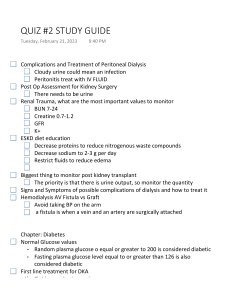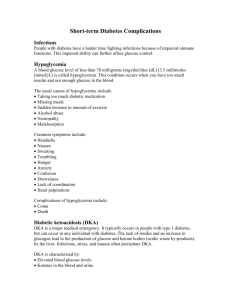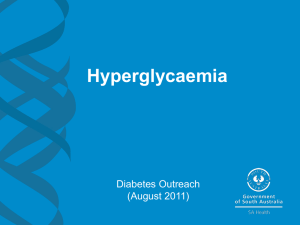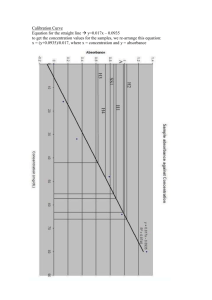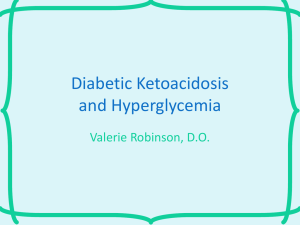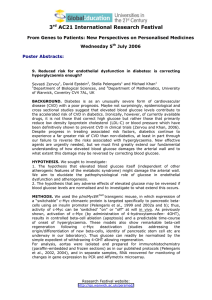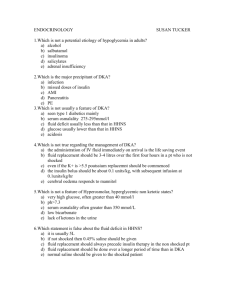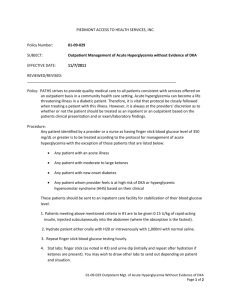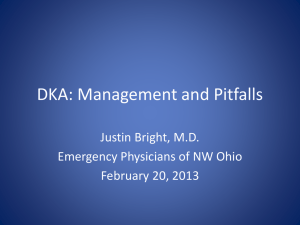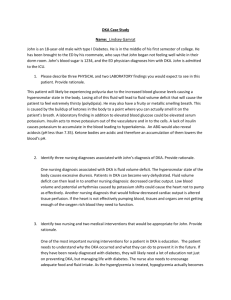hyperosmolar hyperglycaemia
advertisement
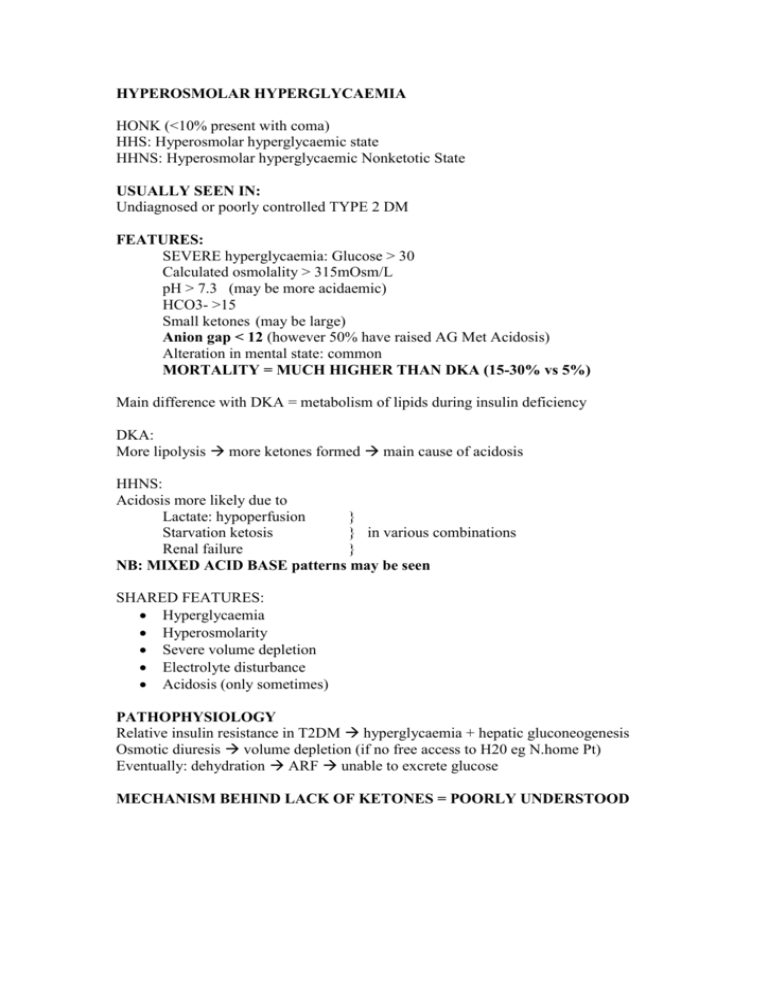
HYPEROSMOLAR HYPERGLYCAEMIA HONK (<10% present with coma) HHS: Hyperosmolar hyperglycaemic state HHNS: Hyperosmolar hyperglycaemic Nonketotic State USUALLY SEEN IN: Undiagnosed or poorly controlled TYPE 2 DM FEATURES: SEVERE hyperglycaemia: Glucose > 30 Calculated osmolality > 315mOsm/L pH > 7.3 (may be more acidaemic) HCO3- >15 Small ketones (may be large) Anion gap < 12 (however 50% have raised AG Met Acidosis) Alteration in mental state: common MORTALITY = MUCH HIGHER THAN DKA (15-30% vs 5%) Main difference with DKA = metabolism of lipids during insulin deficiency DKA: More lipolysis more ketones formed main cause of acidosis HHNS: Acidosis more likely due to Lactate: hypoperfusion } Starvation ketosis } in various combinations Renal failure } NB: MIXED ACID BASE patterns may be seen SHARED FEATURES: Hyperglycaemia Hyperosmolarity Severe volume depletion Electrolyte disturbance Acidosis (only sometimes) PATHOPHYSIOLOGY Relative insulin resistance in T2DM hyperglycaemia + hepatic gluconeogenesis Osmotic diuresis volume depletion (if no free access to H20 eg N.home Pt) Eventually: dehydration ARF unable to excrete glucose MECHANISM BEHIND LACK OF KETONES = POORLY UNDERSTOOD TRIGGERS: Often INSIDIOUS ONSET Concomitant illness: ESPEC PNEUMONIA & UTI (30-50% of cases) Non-compliance Anything that predisposes to: Hyperglycaemia Dehydration Eg: Drugs Li+, B-blockers, Glucocorticoids, Ca2+ blockers, Mannitol, Phenytoin, many others Conditions: DM, Pancreatitis, GIT bleed, PE, Heat illness, Iscaemic gut, AMI, Infection, Burns, CRF, Dialysis, CVA, Rhabdo In view of frequency of precipitating causes & underlying associated medical problems: A WIDE RANGE OF ANCILLARY TESTS SHOULD BE CONSIDERED: Bld Cultures MSU Lipase CK/Trop TFT Coags CxR ECG +/- CT, LP, Tox studies ELECTROLYTE ISSUES: HYPOKALAEMIA: MAIN IMMEDIATE RISK Drops further with volume replacement REQUIRES REPLACEMENT MAKE SURE YOU CORRECT IF ACIDAEMIC Initial K+ < 3.3 = treat (as will drop as soon as fluid started), otherwise wait til U.O. starts, IV up to 10-20mEq/hr STILL NEED TO CORRECT SODIUM FOR ELEVATED GLUCOSE OFTEN HAVE MIXED ACIDOSIS/ALKALOSIS MAY HAVE “NORMAL” pH BUT WITH SEVERE METABOLIC DERANGEMENT (ie acidosis/alkalosis cancel each other out) OSMALRITY > 300 = ABNORMAL > 320 = ABNORMAL MENTAL STATE TREATMENT: 1) VOLUME REPLACEMENT a. Alone can glucose by 80% b. Av. H20 defecit = 20-25% of TBW c. ½ in 1st 12 hours, rest over 24hrs d. Caution: renal/cardiac failure e. Risk of cerebral oedema with >50ml/kg in 1st 4 hrs 2) 3) 4) 5) TREAT CAUSE/TRIGGER TREAT ELECTROLYTE ABNORMALITIES GRADUAL REDUCTION OF GLUCOSE INSULIN – LAST TREATMENT a. Given early drags H20 into cells risk of further intravascular depletion & CVS collapse b. Subcut unreliable give IV 0.1U/kg/hr
